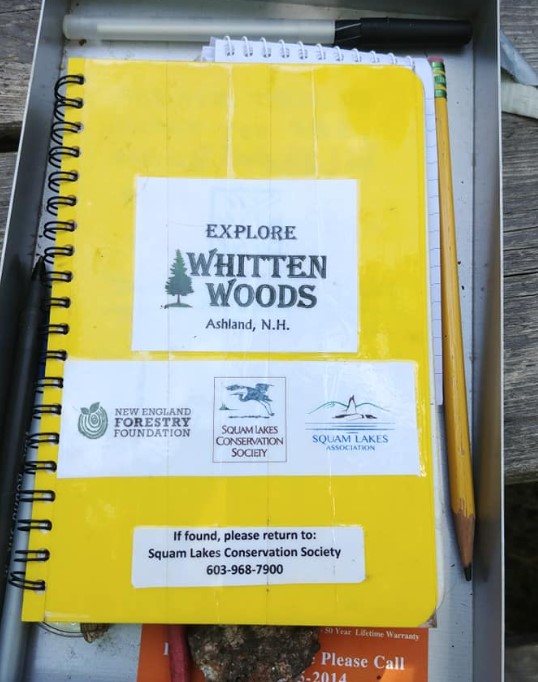
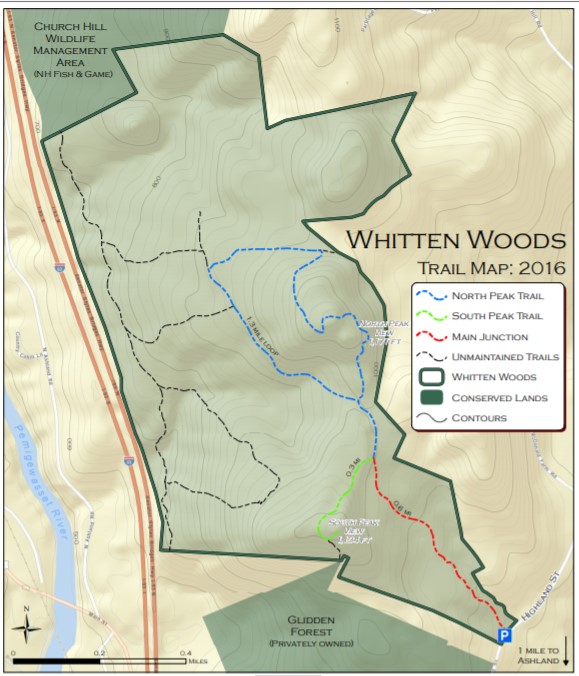
Even on a hot day, I am happy doing local, field reconnaissance at Whitten Woods, in Ashland, with a new geology colleague, Erik Burtis, (who took some of the photos). This site is close enough to campus for a fieldtrip, a signature component of our Environmental Science and Policy courses.
We explored rock types, landforms, including the southern aspect of the sloping land of long deceased Ruben Whitten who fed his neighbors in the year without a summer- 1816. Whitten successfully grew corn, potatoes, and apples. Ash from the volcanic Tambora eruption of 1815, caused cooling and late frosts during the growing season of 1816.
Erik and I hiked to the two summits to check out the landscape.
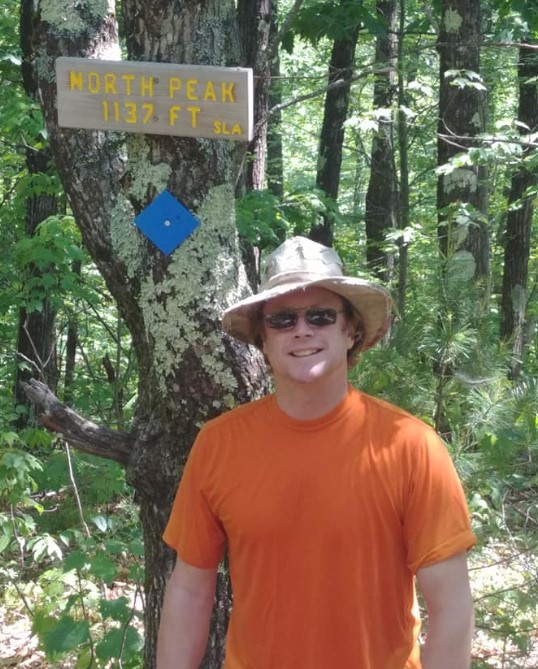
The porphyry rock at the Southern summit has uniformly sized, large rectangular, grained crystals of white feldspar crystals and on the northern summit the rock looked more like metamorphosed sedimentary layers. Eric thought they looked like what you find at Livermore Falls just up from Plymouth on the Pemigewasset River. Somewhere between the north and south summits is the contact.
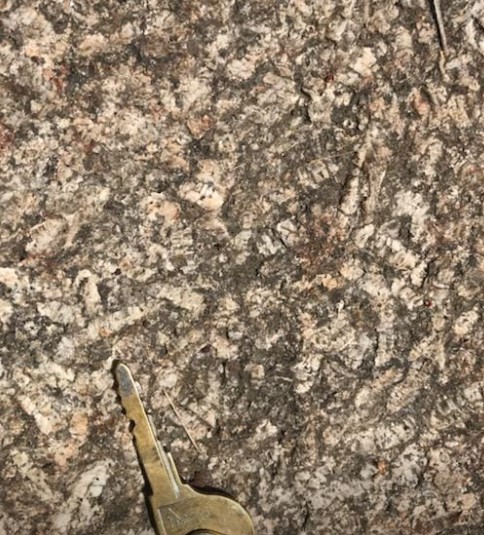
The forest that has grown back on the fields consists of small diameter, similarly sized trees; lots of beech.
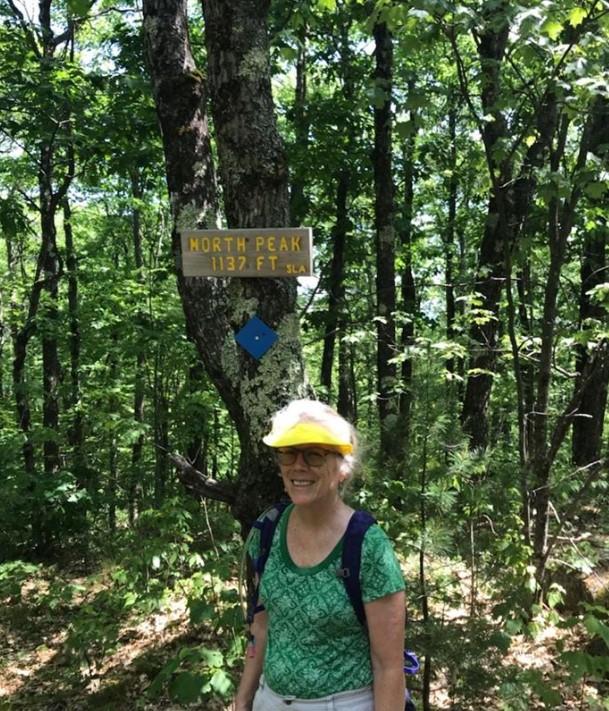
Whitten’s farm is unique from a watershed perspective because the land is situated between the Pemigewasset and Squam Rivers, a key factor in its selection for conservation.
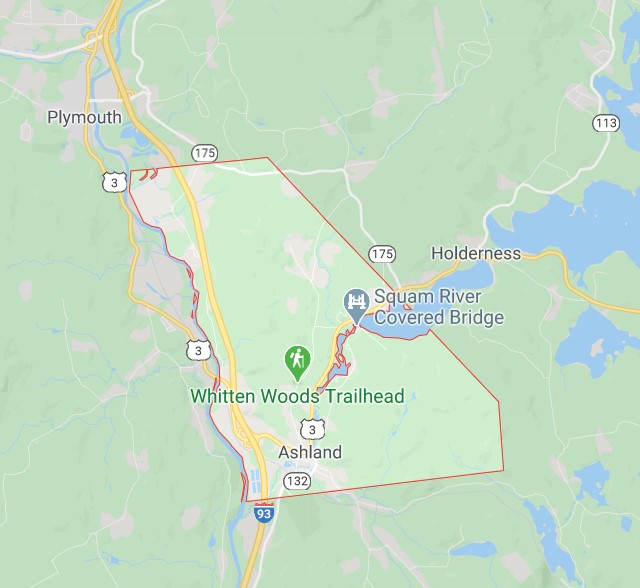
Afterwards, I searched for Whitten’s yellow wooden house that has been moved into Ashland, tucked away, hidden next to the Whipple Museum, just off Main Street. The exterior has been restored, and $20,000 is still needed to finish the inside, https://www.reubenwhitten.org/.
